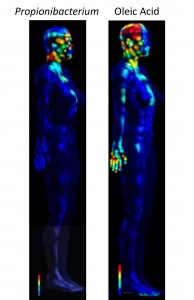By Brent Stephens on June 24, 2015
Economists Meredith Fowlie and Catherine Wolfram at the University of California, Berkeley and Michael Greenstone at the Energy Policy Institute at the University of Chicago (EPIC) have published a new working paper on the economics of residential energy efficiency retrofits, in which they present some discouraging results:
I first read the short research summary from EPIC, “Costs of Residential Energy Efficiency Investments are Twice their Benefits: Implications for Policy,” and found some surprising conclusions that led me to dig deeper into the actual working paper, “Do Energy Efficiency Investments Deliver? Evidence from the Weatherization Assistance Program.”
Continue Reading →
By Brent Stephens on June 5, 2015
It’s been forever since I’ve done one of these literature round-up posts, but you could say that about a lot of post types on here….
Regardless, here are a few recently published papers that I find really interesting:
- Ji and Zhao, 2015, PLoS ONE, Estimating Mortality Derived from Indoor Exposure to Particles of Outdoor Origin – this is a really important effort to combine outdoor air pollution data (PM2.5 and PM10) with a mechanistic understanding of how outdoor particles infiltrate into indoor environments (where we spend most of our time) and estimate the impact of indoor exposure to particles of outdoor origin on mortality. Basically: in the US, Europe, and China, our indoor exposures to outdoor PM account for about 80 or 90% of the mortality associated with outdoor PM. This is something I’ve been thinking about and saying for several years now, so I love to see the work that Bin Zhao and his group are doing at Tsinghua University!
- Bouslimani et al, PNAS, Molecular cartography of the human skin surface in 3D – This one is intense — basically, our bodies are literally covered with both chemicals and microbes, but the chemical makeup of skin surfaces aren’t well understood in total. This paper swabbed the hell out of some peoples’ skin and performed mass spectrometry (for the chemicals) and 16S rRNA sequencing (for the microbes) and made a 3D map of the data. They ended up with some wild human chemical/microbial plots like this:

- Langevin et al, Building and Environment, Simulating the human-building interaction: Development and validation of an agent-based model of office occupant behaviors – This is very cool work that develops and validates an agent-based model of occupant behavior using data from a long-term field study in an office. Basically the ‘agents’ in the model can reasonably accurately mimic the real life occupants and make decisions about whether or not to turn on a fan, heater, or open a window based on their current thermal comfort levels and sensations. This is really important work to see published.
- Jiao et al, ES&T, Field Assessment of the Village Green Project: An Autonomous Community Air Quality Monitoring System – cheap air quality sensors, low cost air quality monitors, or whatever you want to call them are HUGE right now. It really seems like people want to know what they’re breathing and want to be able to understand it accurately and inexpensively. It’s a sort of holy grail for any field. This paper reports a field assessment of a solar-powered air monitoring park bench that could measure ozone, PM2.5, and meteorological parameters and stream the data to the public. They were able to collect a bunch of data in Durham, NC, and had relatively decent correlations with nearby federal equivalent method (FEM) monitors (in English: regulatory monitors). Very cool.

